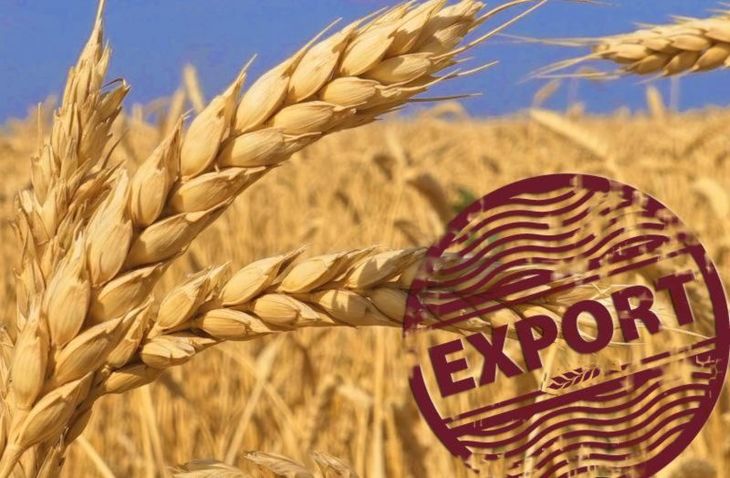Commodities 2022: Black Sea wheat prices on uptrend, mixed outlook for Russian exports

Russia’s move to cap wheat exports, rising domestic calls to maintain food security and a lack of high-protein wheat from other origins are expected to set a bullish tone for wheat prices in the Black Sea region in 2022.
In 2021, dry weather at major wheat suppliers such as Russia, Canada and the US set back yields and production levels, denting their trade prospects.
The US Department of Agriculture in its latest estimates said Russia’s wheat production in the marketing year 2021-22 (July-June) is seen reaching 75.5 million mt, while exports could hit 36 million mt, with the values down 12% and 6% on the year, respectively.
However, Russian wheat has shown high quality with milling wheat accounting for 86% of the harvested crop so far, according to the Russian centre for quality control.
The latest Ukrainian wheat production and trade figures also provide a promising outlook for Black Sea wheat.
The USDA estimated Ukrainian wheat production in the marketing year 2021-22 to reach 33 million mt, with around 24.2 million mt of this volume to be shipped out. In 2021-22, Ukraine’s wheat production and exports are set to rise 30% and 44% on the year, respectively.
S&P Global Platts Analytics estimates Russian 2021-22 wheat production and exports at 75 million mt and 36 million mt, respectively, while Ukraine is seen producing 33.5 million mt and exporting 24.5 million mt.
Damp conditions have also played a pivotal role in shaping the market trend this year, impacting wheat crops in the EU, the Black Sea region’s main competitor in wheat trade.
Wet and cold weather before harvest in Western Europe have resulted in harvest delays and lower-quality wheat, supporting Russian and Ukrainian wheat.
Total world production is set to rise by 2 million mt on the year in 2021-22 to reach 775.3 million mt, mainly because of good crop prospects in Australia and Argentina.
Australia is expected to produce a record 35 million-37 million mt in 2021-2022 (October-September), up from a previous high of 33.3 million mt in 2020-21, according to the USDA.
However, widespread rainfall amid the La Nina event in November resulted in significant quality downgrades across its wheat belt, with the share of its milling grade expected to fall to about 35%-45% in 2021-22 from 65%-70% in 2020-21, market participants said.
Argentinian wheat production in 2021-22 (December-November) is estimated at 20 million mt by the USDA, 13% higher on the year. This could result in record high exports but the country’s agriculture ministry capped 2021-22 wheat exports at 12.5 million mt on Dec. 17 in a move to tackle domestic inflation.
Russia is unlikely to get tough competition from Australia. Traders based in Middle Eastern countries remain sceptical of moving to Australian wheat as freight charges from the country are relatively higher.
With the supplies of high-protein wheat from Australia and Western Europe seen to be tightening, Russia is expected to be the main origin of high protein wheat for the first half of 2022.
Despite this advantage over other competitors, Russia’s variable export taxes and trade quota are expected to offer a bumpy ride for exporters.
Wheat exports out of Russia are expected to be lower in the first half of 2022 as the country has imposed an export quota of 8 million mt for Feb. 15-June 30.
Although traders expected an uptick in demand for the Russian crop before the quota kicks in, a new export tax formula may keep prices elevated and hit demand.
Other than weather concerns, wheat prices have also been supported by the variable export tax introduced by Russia on June 2 to limit food inflation in the domestic market.
From the yearly low of $233/mt seen in July, Russian wheat export prices have rebounded sharply over the past few months, reaching an all-time high of $345.25/mt in November, according to Platts data. On Dec. 24, Platts assessed the Russian wheat with 12.5% protein content at $338/mt FOB Black Sea.
The export tax is calculated as 70% of the difference between the average of export prices on an FOB basis during the 60 days preceding the day of calculation and $200. Tax rates are published every Friday and become effective on Wednesday of the following week.
Russia released new tax rules and export quotas on Dec. 17. Under the new regulations, export tax will have a higher multiplier if wheat prices reach $375/mt, while the tariff will increase further if the prices reach $400/mt.
“There was some demand returning to the market on reports of export quotas from February. However, now with the new mechanism for export taxes, demand may be dented if prices rise too sharply,” a Moscow-based trader said.
Russia’s export tax has hurt the competitiveness of its wheat exports, resulting in lower trade lately.
“More expensive Russian wheat has forced buyers to look for other sources like Ukraine and other European nations,” a trader based in Cairo said. Russia usually exports wheat to countries in the Middle East, including Turkey and Egypt.
Until Dec. 20, Egypt had increased their common wheat purchases from the EU over fivefold on the year to 1.3 million mt, while Turkey bought 64,799 mt against just 5 mt during the corresponding period in 2020, according to various tender and trade data.
Read also
Wheat in Southern Brazil Impacted by Dry Weather and Frosts
Oilseed Industry. Leaders and Strategies in the Times of a Great Change
Black Sea & Danube Region: Oilseed and Vegoil Markets Within Ongoing Transfor...
Serbia. The drought will cause extremely high losses for farmers this year
2023/24 Safrinha Corn in Brazil 91% Harvested
Write to us
Our manager will contact you soon



